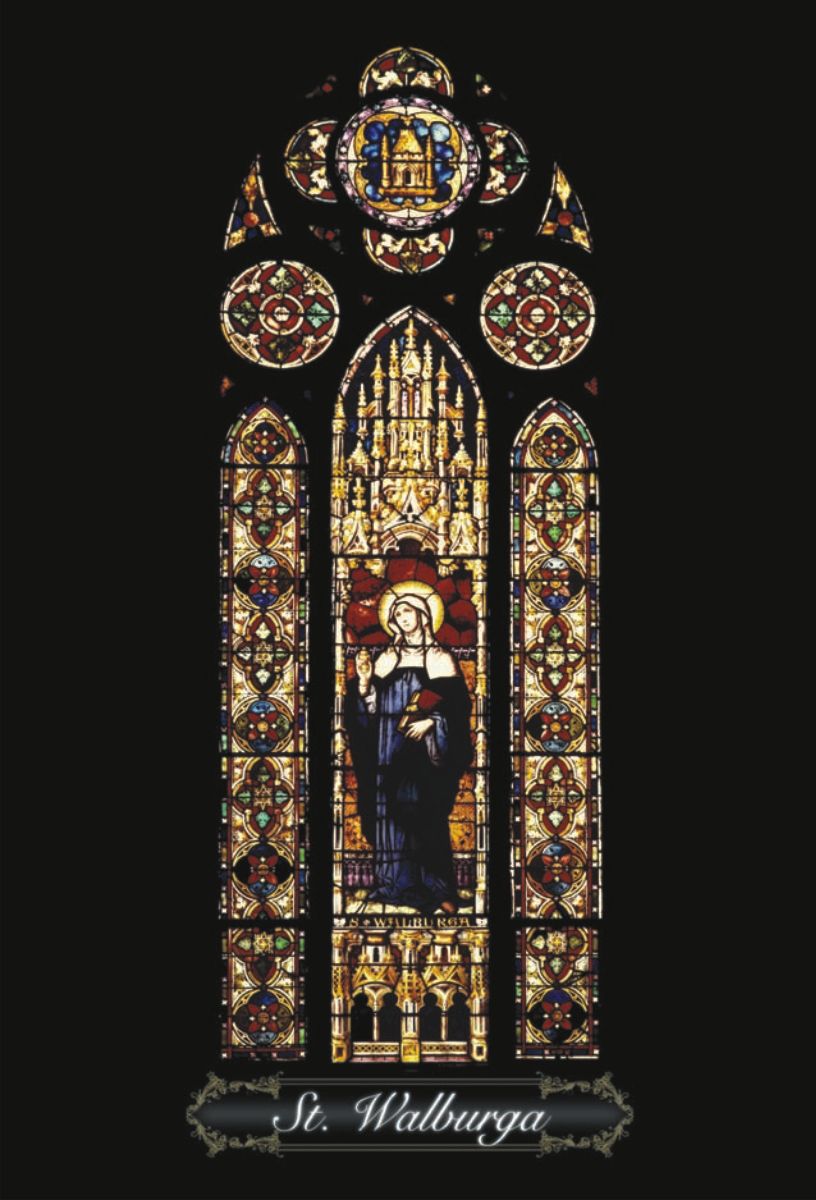
Today I’d like to share a bit about St. Walburga: a Benedictine saint about whom many of us are unfamiliar. As as someone who’s represented, not only in our campus grotto, but also in one of the basilica’s beautiful, stained glass windows, St. Walburga is actually an important presence on the Belmont Abbey campus. And since her feast day is tomorrow, February 25, I thought this might be a good opportunity to explore her life as a model of holiness.
Born in Devonshire, England around 710, Walburga was the daughter of a West Saxon chieftain, and, and her two brothers, Willibald and Winebald, are also recognized as saints. After receiving her education and becoming a nun at Wimborne Monastery, Walburga travelled to Germany as a missionary under her uncle, St.Boniface (another great Benedictine!), and later become Abbess of two separate monasteries there.
St. Walburga represents many of the 10 Benedictine hallmarks so near and dear to Belmont Abbey College. As a member, and later a servant-leader, of a religious community, she lived a life of community and stewardship. Her obedience and humility led her to put down roots – to cultivate stability – far from her original home, and her loving prayer helped to sustain her, together with her sisters and brothers in Christ.
If you’re on campus tomorrow, I invite you to stop into the Basilica and take a look at St. Walburga’s window, the first on the left. Both here, and in the Lourdes grotto behind O’Connell Hall, she is pictured holding a flask of healing oil, which represents, not only the miraculous cures attributed to her intercession, but also the way that the Benedictine life of ora et labora, prayer and work, heals and enriches us by the grace of God.
St. Walburga – patron saint of storms, sailors, and hydrophobia – pray for us!

